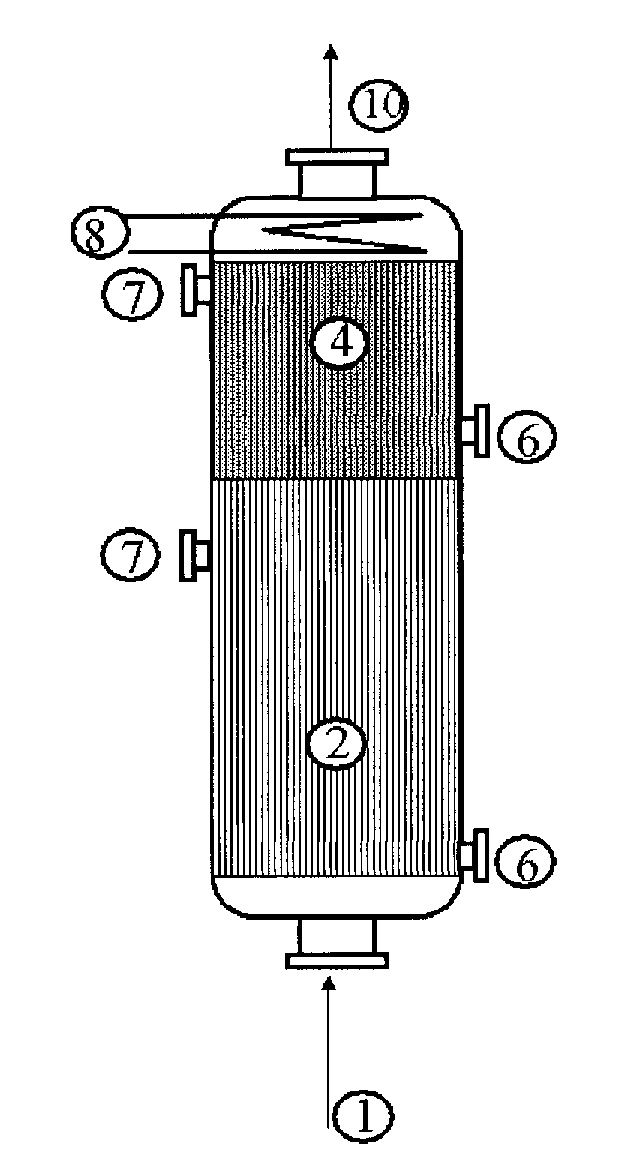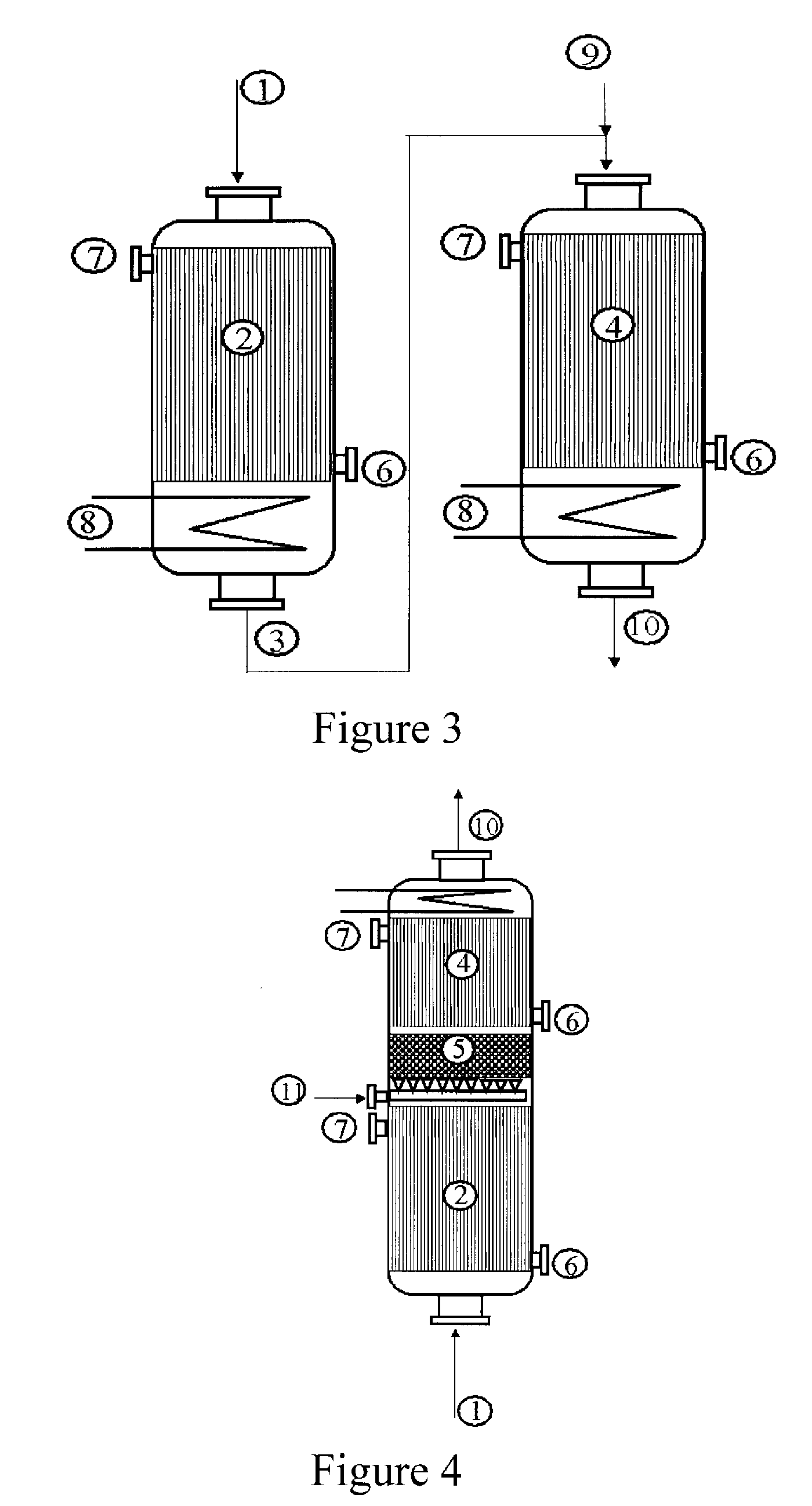Acrylic acid preparation method
a technology of acrylic acid and preparation method, which is applied in the preparation of carbonyl compounds, carboxylic compounds, organic chemistry, etc., can solve problems such as yield loss
- Summary
- Abstract
- Description
- Claims
- Application Information
AI Technical Summary
Benefits of technology
Problems solved by technology
Method used
Image
Examples
example 4
[0053]Use is made of a reactor configuration comprising three beds of catalyst with a feed of the gas mixture comprising propylene from the top downward and an intermediate feed for the glycerol solution. The Pyrex reactor is equipped with a sintered glass for retaining the catalyst.
[0054]A weight of 5 g of catalyst for the oxidation of acrolein to give acrylic acid with the reference ACS4 (from Nippon Shokubai), reduced to a powder in a particle size of 100 to 160 microns and diluted with 5 ml of silicon carbide with a particle size of 0.125 mm, is first of all charged. Subsequently, 9 ml of silicon carbide with a particle size of 0.5 mm are charged. Subsequently, a weight of 1.578 g of catalyst for the dehydration of glycerol with the reference Z1044 (tungstated zirconia from DiaIchi Kigenso KK), diluted with 4 ml of silicone carbide with a particle size of 0.062 mm, is charged.
[0055]Subsequently, different beds of silicon carbide are charged, so as to separate the dehydration cat...
example 5
[0060]Example 4 is repeated but using a 95% by weight glycerol solution (hydrated glycerol).
[0061]The hourly molar flow rates (in micromoles per hour) of the constituents of the mixture are as follows: propylene / oxygen / helium-krypton / water 30 089 / 55 584 / 288 393 / 76 666 for the top feed and glycerol / water 8220 / 2205 for the intermediate feed. These conditions represent a total molar flow rate of C3 compounds (propylene+glycerol) of 38 309 micromol / h.
[0062]The effluents are accumulated in the trap for a time of 81 minutes. The noncondensable gases are analyzed throughout the duration of the assessment. The amount of acrolein produced is 633 micromol / h and the amount of acrylic acid is 29 898 micromol / h. The residual propylene is 2803 micromol / h.
example 6
[0063]Example 4 is repeated but using a 70% by weight glycerol solution.
[0064]The hourly molar flow rates (in micromoles per hour) of the constituents of the mixture are as follows: propylene / oxygen / helium-krypton / water 30 089 / 55 584 / 288 393 / 76 666 for the top feed and glycerol / water 6350 / 13 923. These conditions represent a total molar flow rate of C3 compounds (propylene+glycerol) of 36 439 micromol / h.
[0065]The effluents are accumulated in the trap for a time of 78 minutes. The noncondensable gases are analyzed throughout the duration of the assessment. The amount of acrolein produced is 612 micromol / h and the amount of acrylic acid is 28 212 micromol / h. The residual propylene is 2702 micromol / h.
PUM
 Login to View More
Login to View More Abstract
Description
Claims
Application Information
 Login to View More
Login to View More - R&D
- Intellectual Property
- Life Sciences
- Materials
- Tech Scout
- Unparalleled Data Quality
- Higher Quality Content
- 60% Fewer Hallucinations
Browse by: Latest US Patents, China's latest patents, Technical Efficacy Thesaurus, Application Domain, Technology Topic, Popular Technical Reports.
© 2025 PatSnap. All rights reserved.Legal|Privacy policy|Modern Slavery Act Transparency Statement|Sitemap|About US| Contact US: help@patsnap.com



